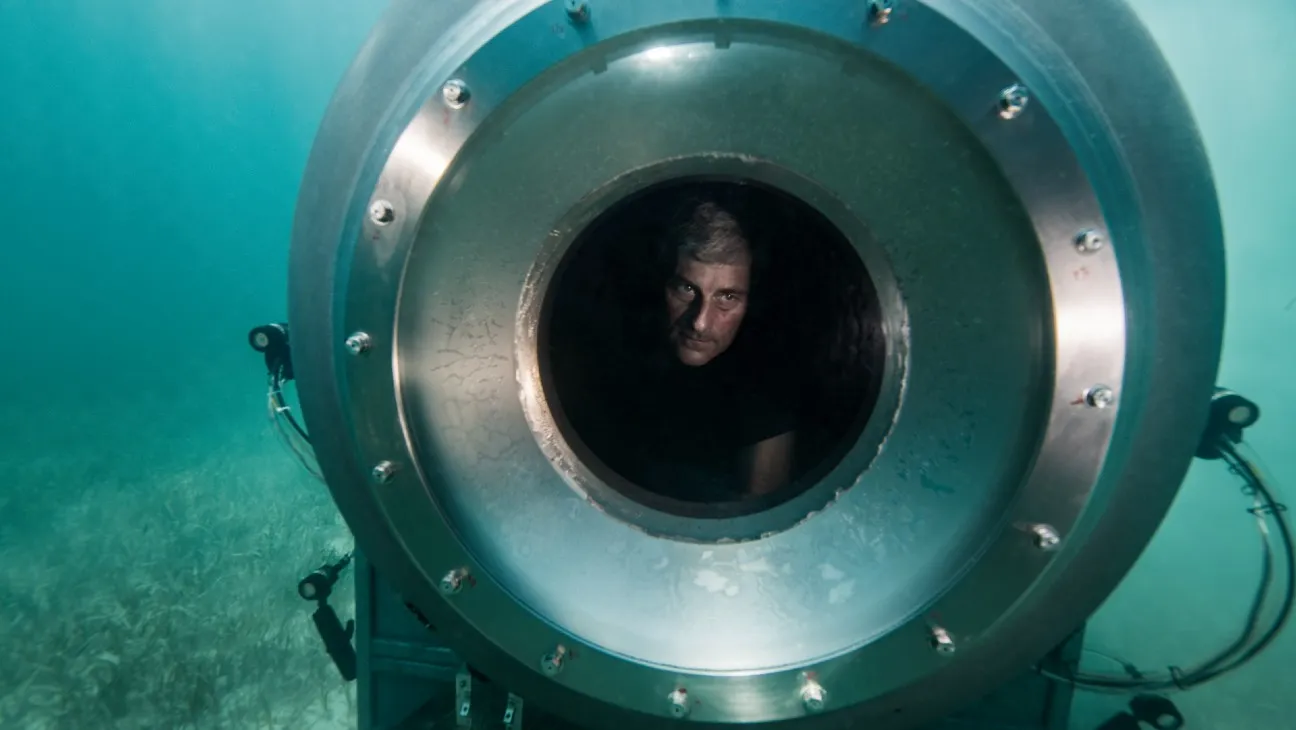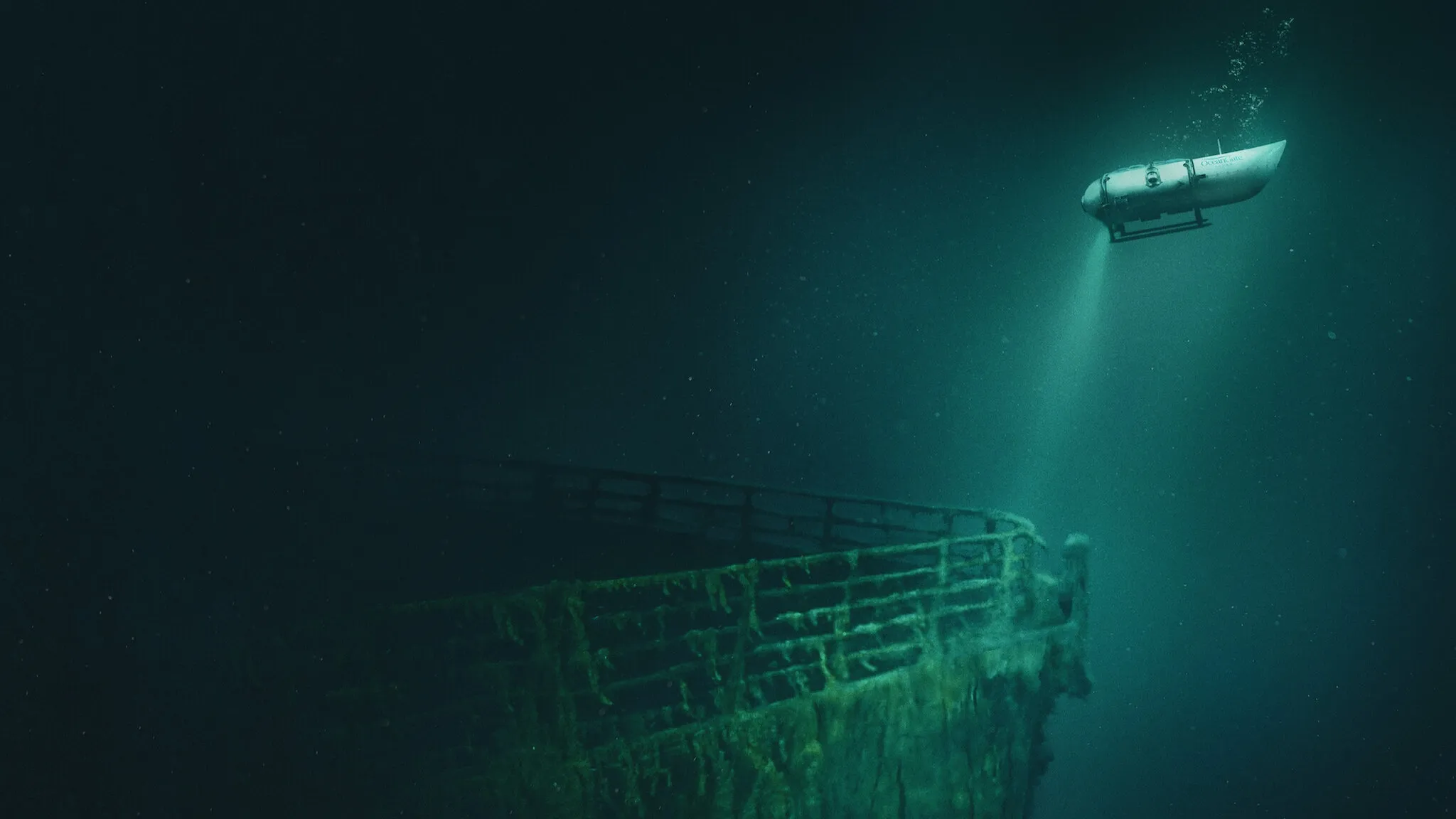The story of the Titan submersible is one the world already knows, at least in its grim conclusion. In June 2023, a vessel on a tourist expedition to the Titanic wreckage vanished, and after days of intense speculation, the verdict was delivered: a catastrophic implosion, claiming all five lives aboard.
Mark Monroe’s documentary, Titan: The OceanGate Disaster, arrives not to reveal the outcome but to meticulously reconstruct the path to it. The film operates like a cinematic coroner, laying out the evidence with a steady hand.
It positions the disaster not as a shocking accident but as the final, logical beat in a story of profound miscalculation. From its opening moments, the narrative is imbued with a sense of inevitability, examining a mission where human ambition was set on a direct collision course with the unforgiving laws of physics.
Architect of His Own Abyss
At the center of the film’s narrative is Stockton Rush, the CEO of OceanGate, who is constructed less as a man and more as a modern archetype. The documentary builds its case against him methodically, using Rush’s own words from archival clips as the primary evidence.
We see a figure animated by a desire to be counted among the great disruptors of our age, a Jeff Bezos or an Elon Musk for the deep sea. This ambition fuels a narrative of heroic innovation, one in which safety regulations are irritating obstacles to progress.
The film compellingly shows how Rush’s worldview tolerated no dissent; former employees recount how technical warnings were reframed as personal attacks, leading to their dismissal. The story becomes a study in how a powerful personality can bend reality, at least for a time.
When we hear Rush confidently tell passengers not to worry about alarms or claim his untested carbon fiber hull is “invulnerable,” the film isn’t just showing a mistake. It is presenting the fatal flaw of a character who refused to believe he could be the villain in his own story.
The Nuts and Bolts of Catastrophe
The documentary shifts its focus from the psychology of its central figure to the mechanics of his creation. It carefully details the engineering decisions that sealed the Titan’s fate, making complex science accessible.
The primary exhibit is the carbon fiber hull, a choice made for its lower cost and weight but one that was dangerously unproven for the immense pressures of the deep ocean. The filmmakers deploy a particularly chilling piece of evidence: audio recordings from an internal monitoring system capturing the sound of carbon fibers snapping under stress on earlier dives.
These pops are the sound of the catastrophe announcing itself. The narrative then follows the procedural trail of negligence. We learn how OceanGate actively sidestepped industry-standard safety certifications, operating in a regulatory gray zone.
This section finds its own compelling subplot in the story of David Lochridge, the former Director of Marine Operations. He emerges as a classic whistleblower, presenting a damning report on the vessel’s flaws only to be fired and buried in legal action—a stark illustration of how the system protected the powerful, not the prudent.
History, Written in Pressure
Titan: The OceanGate Disaster presents its subject as more than a technical failure; it frames the event as a cultural one. The film’s most potent narrative device is the constant, looming presence of the Titanic itself. The tragedy is not just the destination but the thematic blueprint.
A story of human arrogance and ignored warnings from over a century ago finds its direct echo in Rush’s doomed voyage. The documentary argues that this repetition is no coincidence. One former employee observes that “culture kills people,” a line that crystallizes the film’s thesis.
The culture in question is one that celebrates relentless self-belief and rule-breaking as virtues, regardless of the physical stakes. The film closes not with a sense of resolution but with a disquieting question. Stockton Rush’s story has ended, but the values that propelled him to the ocean floor remain very much with us, a reminder that some lessons of history are written in wreckage, waiting to be learned again.
Mark Monroe’s documentary debuted at the Tribeca Film Festival on June 6, 2025, and will be released on Netflix on June 11, 2025
Full Credits
Director: Mark Monroe
Writers: (Documentary format, no specific writer credits)
Producers: Lily Garrison, Mark Monroe, Jon Bardin
Executive Producers: Liz Garbus, Dan Cogan, Kate Barry, Mala Chapple, Tommy Coriale, Jude Gerard Prest, Amy Herdy (and others)
Cast / Narration: Stockton Rush (archival footage), supporting interviews with former OceanGate staff and family members
Director of Photography (Cinematographer): Jake Swantko
Editor: James Leche
Composer: Andrew Skeet, Nathan Klein
The Review
Titan: The OceanGate Disaster
A meticulously constructed and chilling documentary, Titan: The OceanGate Disaster serves as a compelling autopsy of a tragedy foretold. It masterfully uses archival footage to build its case, framing the event not as a simple accident but as the inevitable result of one man’s hubris and a culture that champions reckless innovation. While it focuses squarely on its central villain, the film is a powerful and unsettling examination of a modern cautionary tale, making for essential, if grim, viewing.
PROS
- Meticulous narrative structure that methodically builds its case.
- Effective use of archival footage, allowing the central figure to condemn himself.
- Clearly explains the complex technical failures for a general audience.
- Frames the story as a powerful, modern cautionary tale.
CONS
- The intense focus on Stockton Rush leaves little room to explore the other passengers' stories.
- Offers few new revelations for those who followed the news story closely.


















































